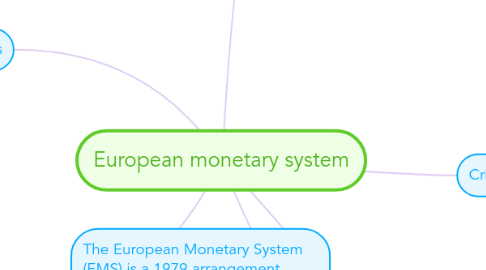European monetary system
von Василиса Митрофанова


1. The European Monetary System (EMS) is a 1979 arrangement between several European countries which links their currencies in an attempt to stabilize the exchange rate. This system was succeeded by the European Economic and Monetary Union (EMU), an institution of the European Union (EU), which established a common currency called the euro.
2. Main aims
2.1. The European Monetary System originated in an attempt to stabilize inflation and stop large exchange rate fluctuations between European countries. Then, in June 1998, the European Central Bank was established and, in January 1999, a unified currency, the euro, was born and came to be used by most EU member countries.
3. ERM I
3.1. to reduce exchange rate variability among the EMS countries, which was a step toward the introduction of the common currency.
4. ERM II
4.1. to acclimatize the more recent member countries of the EU toward becoming members of the Euro-zone. The ERM II provided non-euro countries with a larger leeway of 15 percent to have their currency fluctuate above or below the determined exchange rate.
5. Arrengements
5.1. To maintain price stability in the then-planned Euro-zone, the Maastricht Treaty of 1992 introduced convergence criteria related to controlling inflation, public deficit, and public debt, as well as to exchange rate stability and the convergence of interest rates. These conditions imply the benchmarks for joining the EMU as well the Euro-zone:
5.1.1. The inflation rate must be no more than 1.5 percentage points higher than the average of the three lowest-inflation member states of the EU.
5.1.2. The ratio of the budget deficit to the GDP (gross domestic product) must not exceed 3 percent at the end of the preceding fiscal year.
5.1.3. The ratio of gross government debt to GDP ratio must not exceed 60 percent at the end of the preceding fiscal year.
5.1.4. Applicant countries must join ERM II under the EMS for two consecutive years and must not devalue their currency during the period.
5.1.5. The nominal long-term interest rate must not be more than 2 percentage points higher than those in the three lowest-inflation member states.

